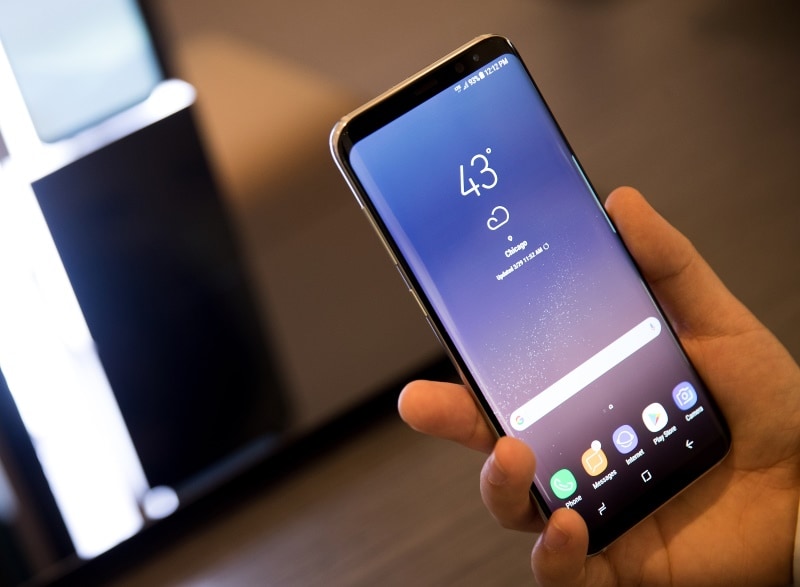There’s a lot of interest in new virtual reality headsets, although we’re still in very early days of the technology. As of now, the Oculus Rift, which kicked off the current phase of interest in VR, is still not available to consumers, though you can pre-order one now, for a whopping $599 (roughly Rs. 39,500). The Rift will start shipping in March, though if you order one now, you won’t get it before July.
(Also see: Oculus Rift Preview: Bringing Reality to the Virtual World)
The HTC Vive is also not on sale yet, with the headset’s commercial launch planned for April, with pre-orders starting in February.
The price for the consumer edition is not known as yet, though some predict that the HTC Vive VR headset will cost $1,500 – more than Rs. 1 lakh. Sony is also expected to bring its VR headset, the Playstation VR to market sometime this year.
(Also see: HTC Vive First Impressions: Serious Oculus Rift Competition)
As of now, apart from Google’s low-end Cardboard headset, the only headset backed by a major company right now is the Samsung Oculus Gear VR, which was made in collaboration between Samsung and Oculus, and is available at $99, and was also launched in India at Rs. 8,200.
![]()
(Also see: How Samsung Brought the Gear VR and Gear S2 to India)
And already, there’s a new Kickstarter project that is trying to address what could be one of the bigger pain points with using VR headsets – that they can be really uncomfortable if you’re wearing glasses. VR Lens Lab is a crowdfunding project that just launched, and has raised over EUR 1,300 (roughly Rs. 1 lakh) against a EUR 5,000 (roughly Rs. 3.4 lakh) target, and it will continue accepting funding until February 3.
The idea behind the project is simple – glasses are hard to fit inside most VR headsets, and although some of the existing sets do allow you to adjust the set for different levels of power, the adjustment can be limited. It’s often better to just squash your face, glasses and all, into a tight enclosure. What Lens Lab wants to do is provide an adaptor and powered lenses that you can use with a VR headset, so that you don’t have to wear glasses while wearing your headset. Here’s a video explaining the concept:
Backing the Kickstarter, you’ll have to pledge EUR 9 (Rs. 660) to get a lens adaptor, and you can get a powered lens from your local optician, or from the company’s website. According to the company, it will release similar adaptors for other VR headsets too as and when they become available to consumers.
It’s a pretty big deal for people who wear glasses and are interested in VR, but it’s only the tip of the iceberg. The growing interest in VR means that there are now plenty of companies that are getting into the business of building accessories for VR devices that are still not being sold – the most famous example probably being the Virtuix Omni, which also got its start on Kickstarter. You can preorder one for $699 (roughly Rs. 47,000) but there are now many more things that you can buy for use with your VR headsets.
The most obvious one is controllers – with Oculus’ own Touch controller delayed, motion tracking controllers sound like a good buy for enthusiasts. The Razer Hydra is the most popular of such controllers, based on discussions online, though at $599 (roughly Rs. 40,000) on Amazon, it’s a pretty expensive item in its own right.
With the Gear VR, one of the problems we had is that unless you’re holding your hand up to the side of your head the entire time you’re using the headset, you’re going to have a hard time finding your way to the touch controls on the side of the wearable.
For gaming, one of the best solutions is to use a controller – at least in apps that support it. There are a lot of Android gamepads – Moga is the frontrunner according to most people – and aside from that, you can get the Amkette Evo Gamepad that is available fairly cheaply, or if you’re looking for something a little more compact and portable, you could try out the Phonejoy 2 gamepad.
![]()
Fog is a pretty big issue with enclosed headsets, and luckily, we don’t have to try and guess at what the best way of dealing with this is – we can just turn to the man himself, Oculus CTO Joh Carmack, who tweeted a link to anti-fog wipes from Clarity Defog It, priced at $9 (roughly Rs. 600) for a pack of three wipes.
And apart from the immersive video that surrounds you, the VR experience gets really driven home by audio, so you don’t want to rely on speakers for the experience. With the Rift, you’re getting a built in audio system, and we don’t know much about the other systems yet, but in the case of the Gear VR, you will have to run the audio cable from your phone – or you could go wirefree with a good stereo Bluetooth headset.
(Also see: The Best Bluetooth Headset For Any Budget)
These are just some of the many new accessories that you might need to buy if you’re getting into VR. It’s possible to enjoy the experience without buying any of this – in fact, even a cheap Cardboard headset can be quite transformative. However, there’s no denying that all the small things add up to make a more engaging and immersive experience. Of course, getting all this means you’re buying accessories for your new accessory, which is a little excessive, but that’s what being an early adopter is all about, right?


